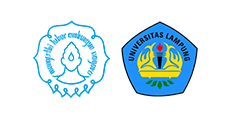The Comparison Between the Use of Blender and 3DS Max application toward students' Comprehension of 3D Animation Subject at Vocational School in Surakarta
Abstract
Based on observations at Vocational School in Surakarta, the 3 -dimensional animated subject using 3Ds Max as the only learning tool, consequently, students find it is difficult to practice during off-class as the 3Ds Max is not free software and affordable to buy by students. Blender application maybe can be compensate for 3D Max, which has a user-friendly appearance, neatly arranged, and free. The population in this study is the students of Vocational High School. The total population was 297 students.. The sample used was 70 students. The sampling technique in this study used the simple random sampling method. The data collection technique used the pretest-posttest. The data analysis technique used is the balance test, normality test, homogeneity test, and hypothesis testing using the independent sample t-test. The results of the study are as follows. First, there are differences in students’ comprehension that can be seen from the learning outcomes between the use of Blender applications (experiment class) and the 3Ds Max application (control class). Second, the effectiveness of Blender supporting applications is higher than the 3Ds Max application in improving students’ comprehension and learning outcomes. In general, it can be concluded that Blender can be used as an alternative or can replace 3Dmax as a learning medium in 3-dimensional animated subjects. This study aims to determine (1) whether there are differences between the use of Blender application and 3Ds Max on students’ comprehension; (2) a more effective supporting applications between Blender applications and 3Ds Max. This study used an experimental method with a pretest-posttest control group design model.
Keywords
Full Text:
PDFReferences
Abdurrahman, Mulyono. 2009. Pendidikan Bagi Anak Berkesulitan Belajar. Jakarta: PT Rineka Cipta.
Ardhianto, E., & Hadikurniawati, W. (2012). Augmented Reality Objek 3 Dimensi dengan Perangkat Artoolkit dan Blender, 17(2), 107–117.
Aufa Angggun Probo Kusumo. (2017). RANCANG BANGUN APLIKASI 3D SPARE PART SEPEDA MOTOR UNTUK PEMBELAJARAN TEKNIK OTOMOTIF ( Studi Kasus di SMK Adi Sumarmo ). Electronic Theses and Dissertation Universitas Muhammadiyah Surakarta.
Berta Sihite, Febriliyan Samopa, dan Nisfu Asrul Sani. 2013. “Pembuatan Aplikasi 3D Viewer Mobile Dengan Menggunakan Teknologi Virtual Reality.” Jurnal Teknik Pomits 2(2): 397–400.
Dounas, T., & Sigalas, A. (2009). Blender , an Open Source Design Tool : Advances and Integration in the Architectural Production Pipeline. Aristoteleio University of Thessaloniki, 21, 737–744.
Lei, Zhen et al. 2015. “From AutoCAD to 3ds Max : An Automated Approach for Animating Heavy Lifting Studies.” Canadian Journal of Civil Engineering 42(October): 190–198.
Limniou, Maria, David Roberts, and Nikos Papadopoulos. 2007. “Full Immersive Virtual Environment CAVE TM in Chemistry Education.” Computer & Education ScienceDirect.
Notoatmodjo, S. 2010. Metodologi Penelitian Kesehatan. Jakarta : Rineka Cipta.
Rinaldi, J., Rumagit, A. M., Lumenta, A. S. M., & Wowor, A. P. R. (2012). Perancangan Tutorial Penerimaan Mahasiswa Baru Universitas Sam Ratulangi Berbasis Animasi 3D. Jurnal Teknik Elektro Dan Komputer Universitar Samratulangi, 1, 1–6.
Sugiyono. 2012. Metode Penelitian Kuantitatif Kualitatif dan R&D. Bandung: Alfabeta.
Sundayana, Rostina. 2016. Kaitan Antara Gaya Belajar, Kemandirian Belajar,
dan Kemampuan Pemecahan Masalah Siswa SMP dalam Pelajaran
Matematika. Jurnal Ilmiah Program Studi Matematika STKIP Garut, 8 (1): 151.
Wahyudin, Sutikno.2010.Keefektifan Pembelajaran Berbantuan Multimedia Menggunakan Metode Inkuiri Terbimbing Untuk Meningkatkan Minat dan Pemahaman Siswa.Jurnal Pendidikan Fisika Indonesia (JPFI).Volume 6, 58–62.













